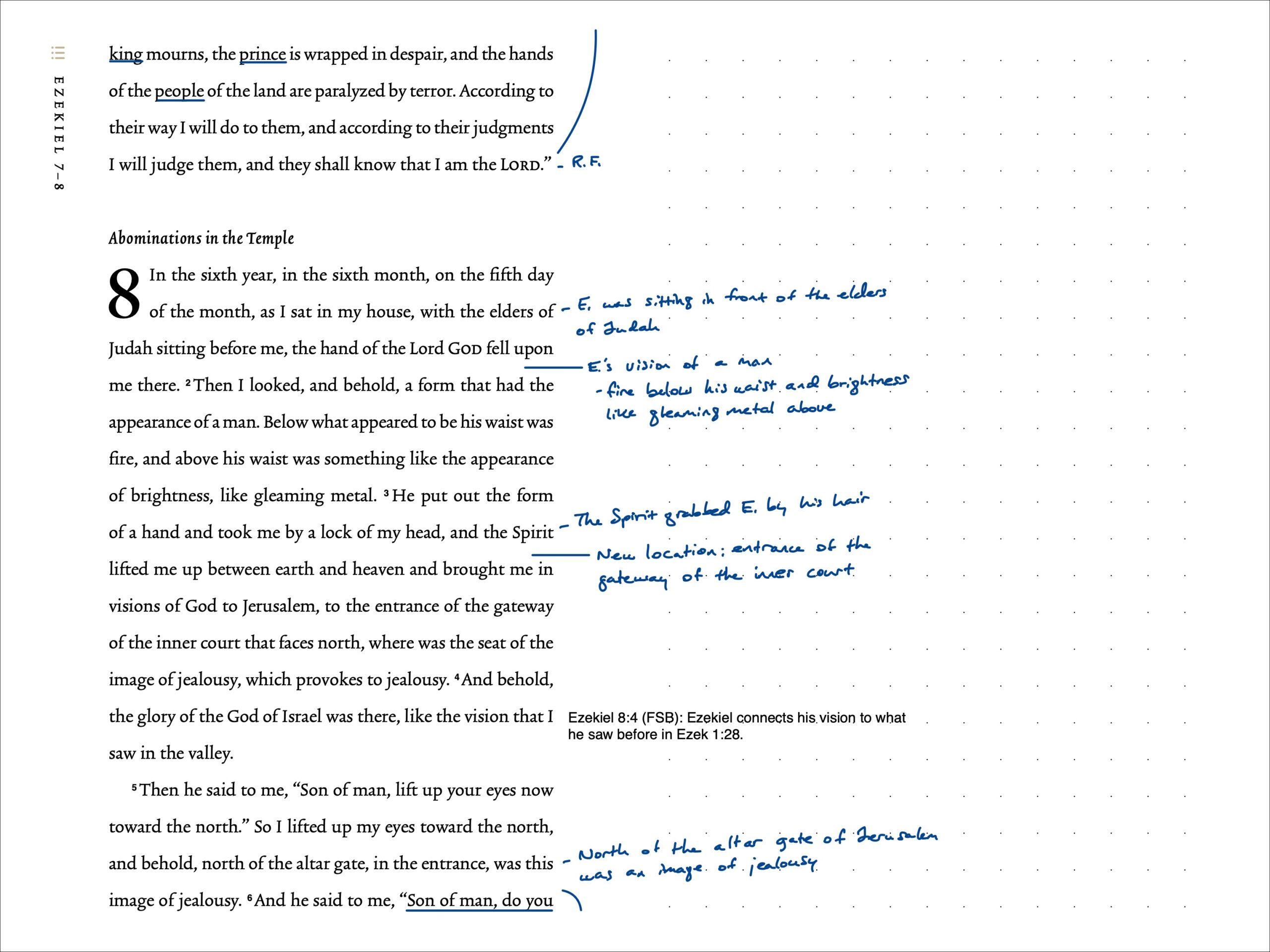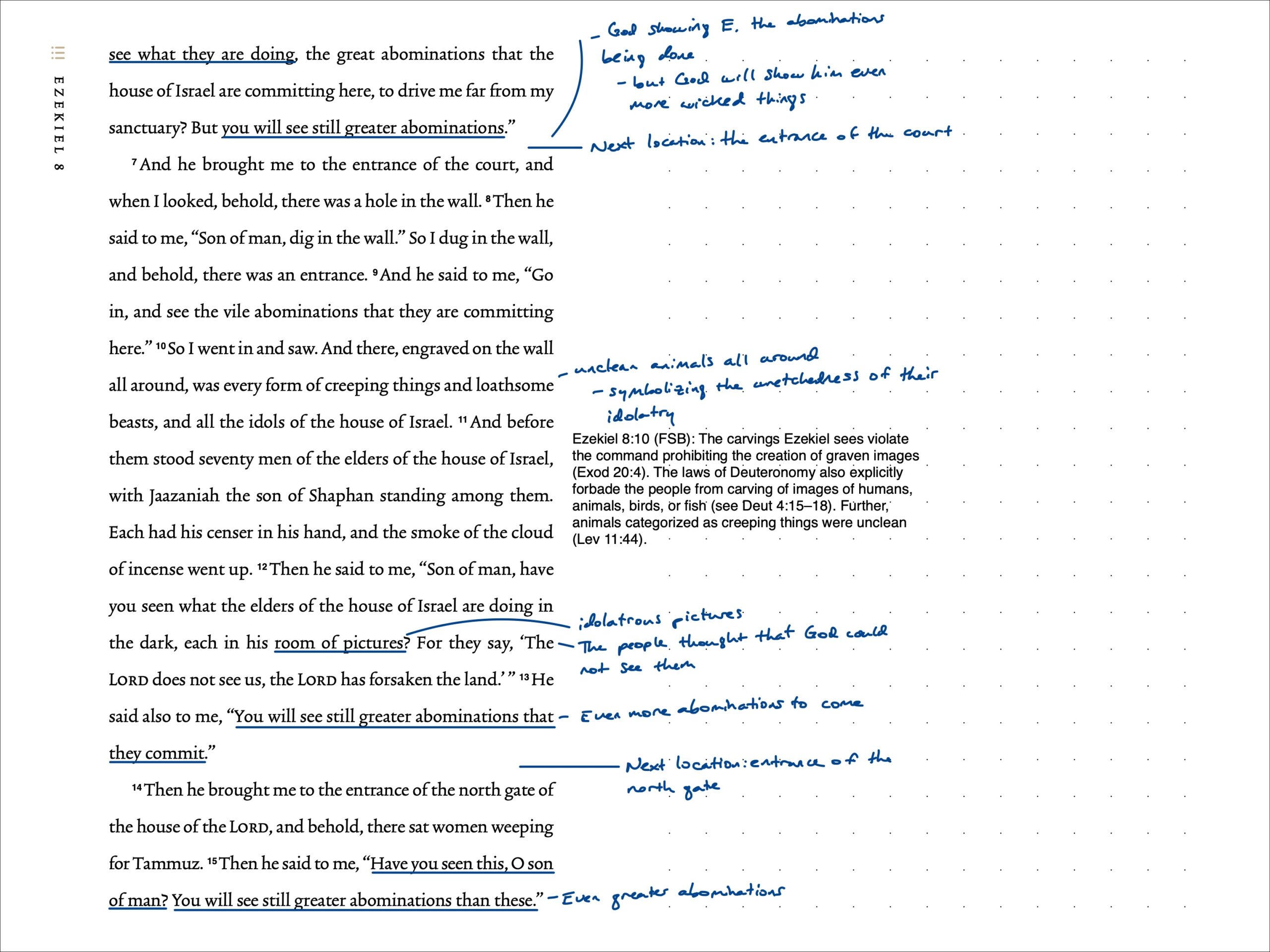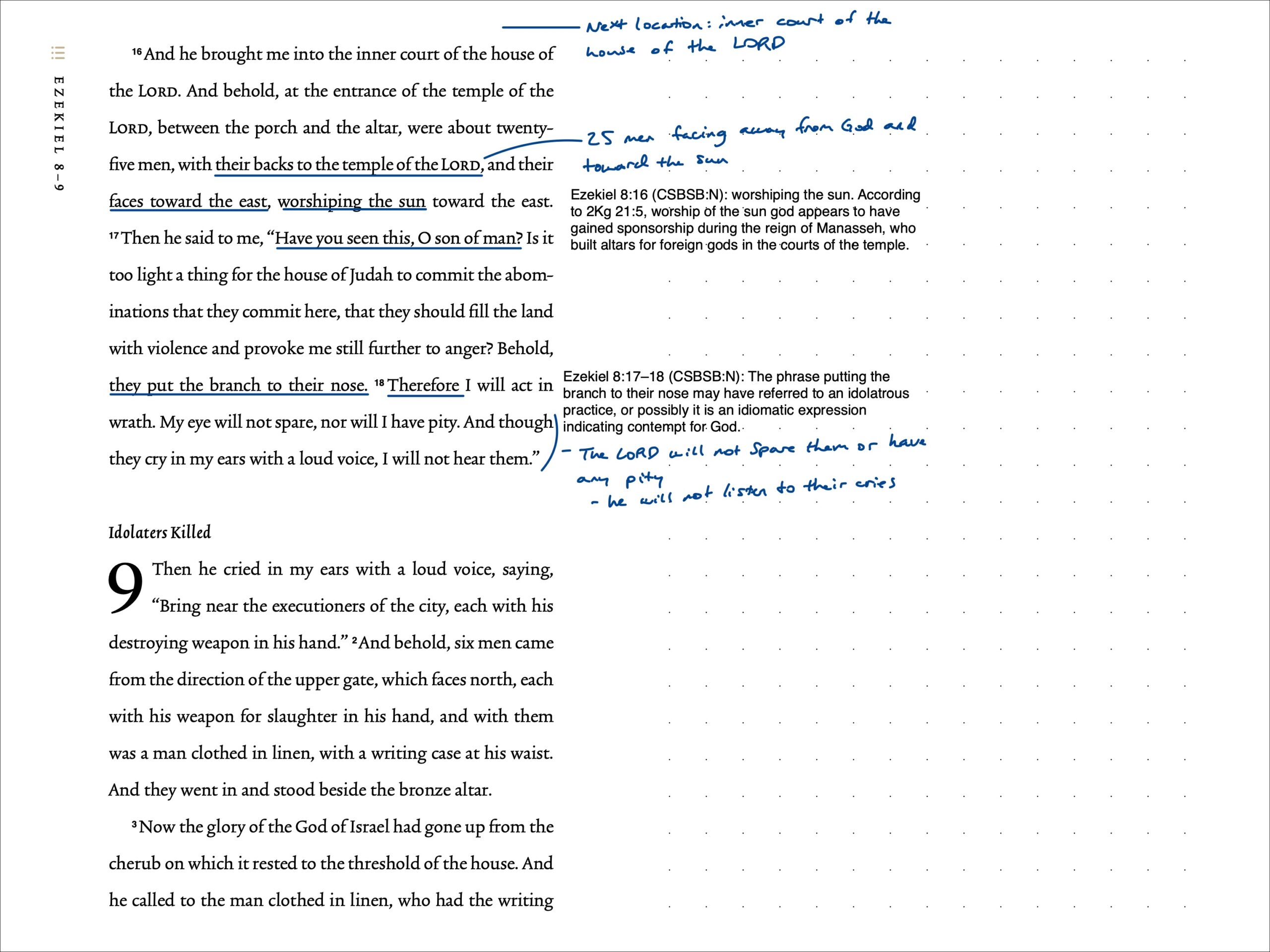| Date | Version | Reading Plan |
|---|---|---|
| @August 28, 2023 | ESV (2016) | ESV Prophets Plan 2023 |
Pericopes
- Abominations in the Temple
Notes
The chapter opens with Ezekiel sitting in his house with the elders of Judah in front of him. Ezekiel was given a vision of a man who had the appearance of fire below his waist and brightness like gleaming metal above.
In Ezekiel 8:3-4, the Spirit took Ezekiel by a lock of his hair and brought him in visions to the gateway of the inner court. Here Ezekiel saw the glory of God and described it “like the vision that I saw in the valley”, connecting this vision to the one prior in Ezek. 1:8.
In Ezek. 8:5-6, God tells Ezekiel to lift up his eyes to the north where he saw an “image of jealousy”. God says, “Son of man, do you see what they are doing?”, and He showed him the wickedness being done. Got then told Ezekiel that he would “see still greater abominations.” (Ezek. 8:6). This combination of God asking Ezekiel what he sees and assuring still greater abominations to come is repeated multiple times in the chapter.
In Ezek. 8:7-13, Ezekiel is brought to another location, the entrance of the court. Here he saw a hole in the wall and God told him to dig in the wall. God tells Ezekiel to go in to see the “vile abominations that they are committing here.” (Ezek. 8:9). There were drawings and carvings of “every form of creeping things and loathsome beasts, and all the idols of the house of Israel.” (Ezek. 8:10). The carvings violated the command prohibiting the creation of graven images in Exod. 20:4 and of carving images of humans, animals, birds or fish in Deut: 4:15-18). Furthermore, they were carvings of unclean creeping things (Lev. 11:44). The scene was rife with rebellion, but, God assured even greater abominations to come (Ezek. 8:13).
In Ezek. 8:14-15, Ezekiel is taken to the next location: the entrance of the north gate. Here he saw a woman weeping for Tammuz, a Sumerian deity and part of the dying-and-rising-god mythology connected to the fertility rituals. The ritual described here was intended to restore Tammuz to life in order to regain the land’s fertility, a major act of idolatry and rebellion against the true God. But yet again, God assures Ezekiel that he will see even greater abominations. (Ezek. 8:15).
In the final section (Ezek. 8:16-18), Ezekiel is brought to another location: the inner court of the house of the LORD. Here he sees 25 men who have their backs to the temple of the LORD, with “faces toward the east, worshiping the sun” (Ezek. 8:16). According to 2 Kings 21:5, worship of the sun god appears to have gained sponsorship during the reign of Manasseh, who built altars for foreign gods in the courts of the temple. The LORD asks Ezekiel if he sees this and that “they put the branch to their nose.” (Ezek. 8:17). This phrase may have referred to an idolatrous practice or was an idiomatic expression indicating contempt for God. This rampant rebellion is the cause for God’s wrath and He says, “My eye will not spare, nor will I have pity”. He will not hear them even if they cry in His ears with a loud voice. (Ezek. 8:18).
Application
In this chapter, Ezekiel is transported to various locations, in vision, by the Spirit, to see the abominable, idolatrous practices of the people. Each one gets progressively worse, showing the depth they had fallen from worshiping the true God. The people were steeped in worshiping just about everything except for Him.
In this, it seems helpful to think of God as the epicenter of all creation. If our backs are turned away from Him and toward His creation, we can orient ourselves in any direction, worshiping any number of things He has created or gifts He has given. Whether our jobs, our families, our successes or even collective human progress, the possibilities are nearly endless.
It is only when we turn to see the awesomeness of the Creator do we become properly oriented in our worship. Seeing Him for who He is leads to worshiping Him for what He is; our beloved Lord and Savior. What a glory He is to behold when we see Him and worship Him rightly.
Scripture Journal Notes
Commentaries & Resources Used
- ESV Study Bible. (Wheaton, IL: Crossway, 2008)
- Faithlife Study Bible (Lexham Press, 2016)
- Believer’s Bible Commentary (Thomas Nelson, 2016)
- CSB Study Bible Notes (Holman Bible Publishers, 2017)
- Matthew Henry’s Commentary on the Whole Bible (Guardian Press, 1976)
- The Bible: A Reader’s Guide (Sterling Publishing, 2011)
- The Infographic Bible (Zondervan, 2018)
- ESV Digital Scripture Journal (Crossway, 2019)


